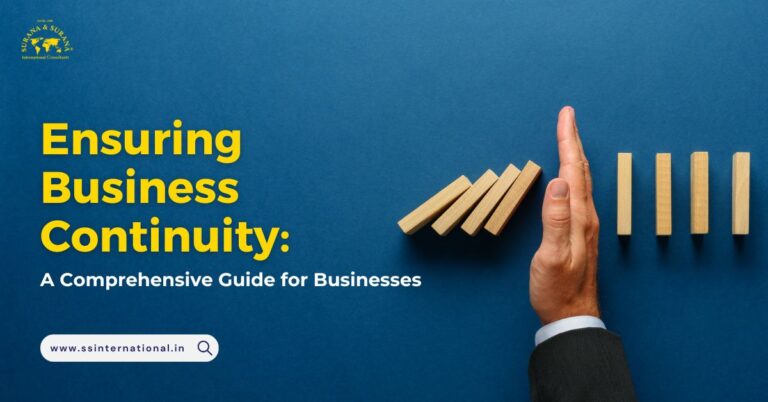
Introduction to post-merger integration and transition
In today’s dynamic business landscape, merger and acquisition deals have evolved into a common and strategic maneuver. Companies, driven by the pursuit of growth, synergy, and competitive advantage, are continually on the lookout for opportunities to expand their footprint, bolster their capabilities, and fortify their market presence. However, the path to a successful business deal extends far beyond the initial negotiation and closing stages. What often determines the long-term prosperity and viability of such ventures is the art of effectively managing the post-merger integration and transition process.
The complexities and intricacies of a merger or acquisition are magnified during the integration phase. It’s a phase where two distinct organizational cultures, processes, and systems converge, and where the true potential of the deal is either unlocked or overlooked. It’s a pivotal juncture where leadership, strategy, and meticulous execution are paramount. The ability to harmonize teams, technologies, and corporate cultures, and to navigate the inevitable challenges, can make or break the deal’s success. As such, a comprehensive post-merger integration plan, tailored to address the unique nuances of the organizations involved, is indispensable. It becomes the blueprint for realizing the promised synergies, optimizing operational efficiencies, and ensuring a seamless transition that propels the newly-formed entity towards a brighter and more prosperous future.”
This extended statement emphasizes the critical role of post-merger integration and transition, highlighting the challenges and the need for meticulous planning in this phase of the deal-making process.
The importance of effective post-merger integration
Post-merger integration stands as the pivotal bridge that connects the vision conceived during the negotiation and execution of a merger or acquisition with the tangible, long-term success of the newly-formed entity. It’s the make-or-break phase that determines whether the anticipated synergies and benefits of the deal will be realized or if they will remain elusive promises. Here’s why post-merger integration is not just a phase but a strategic imperative:
- Unlocking Synergies: Mergers and acquisitions are often driven by the promise of synergies – cost savings, revenue growth, and market dominance. Effective integration is the key to unlocking these synergies and achieving the financial goals of the deal.
- Maximizing Value Creation: Integration is where the value creation truly begins. It’s the stage where operational efficiencies are optimized, product portfolios are rationalized, and new revenue streams are explored, all contributing to increased shareholder value.
- Preserving Employee Morale: Employees often feel the impact of mergers and acquisitions the most. Effective integration ensures a smooth transition for the workforce, preserving morale, retaining talent, and minimizing the disruptions that can lead to attrition.
- Customer Trust and Loyalty: Customers are sensitive to change. Well-executed integration efforts preserve the customer experience, maintaining trust and loyalty, which is critical in competitive markets.
- Mitigating Risks: Legal, financial, and operational risks are inherent in any merger or acquisition. A robust integration plan identifies and mitigates these risks, safeguarding the interests of both parties.
- Competitive Edge: Rapid integration allows the newly-formed entity to maintain its competitive edge in the market. Delayed or flawed integration can result in missed opportunities and market share erosion.
- Strategic Execution: Integration is where the rubber meets the road. It’s where the strategic vision is translated into practical action, making it a critical phase for leadership teams to execute effectively.
In essence, post-merger integration isn’t just a phase; it’s the heartbeat of a successful merger or acquisition. It’s the phase that can turn a promising deal into a prosperous future or a missed opportunity. With meticulous planning, strategic foresight, and a commitment to seamless integration, companies can reap the full benefits of their merger or acquisition, positioning themselves for long-term success.
Key challenges in post-merger integration
While post-merger integration offers numerous opportunities, it also presents several challenges. One of the key challenges is cultural integration. When two companies with different cultures come together, there is often resistance, conflicts, and confusion among employees. Another challenge is communication. During the integration process, it is essential to establish clear channels of communication to keep all stakeholders informed and engaged. Additionally, managing the transition of systems, processes, and technologies can be complex and time-consuming.
Understanding the different stages of post-merger integration
Post-merger integration can be divided into several stages, each with its own objectives and activities.
- The first stage is the pre-merger planning phase, where the integration team develops a comprehensive integration plan and identifies potential risks and challenges.
- The second stage is the immediate post-closing phase, where the integration team focuses on stabilizing the operations, communicating with employees, and addressing any immediate issues.
- The third stage is the long-term integration phase, where the integration team works towards achieving the strategic objectives of the deal and fully integrating the two companies.
Best practices for successful post-merger integration
To ensure a successful post-merger integration, it is important to follow best practices.
- Firstly, it is crucial to develop a detailed integration plan that outlines the objectives, timelines, and key activities of the integration process. The plan should also include a clear governance structure and roles and responsibilities for the integration team.
- Secondly, effective communication is paramount. Regular and transparent communication with employees, customers, and other stakeholders helps to build trust and alignment.
- Thirdly, cultural integration should be carefully managed. It is important to identify the cultural differences between the merging companies and find ways to bridge the gaps. This can be done through cultural training programs, team-building activities, and creating a shared vision and values.
Developing a post-merger integration plan
In the realm of mergers and acquisitions, a comprehensive post-merger integration plan serves as the strategic foundation for success. It’s not merely a document; it’s the roadmap that can determine the difference between realizing the full potential of a deal or encountering costly challenges.
- Strategic Precision: The plan outlines the strategic objectives behind the merger or acquisition, providing a clear direction.
- Meticulous Planning: It details each integration activity, timelines, and resource requirements, leaving no room for uncertainty.
- Governance and Accountability: This plan establishes a governance structure with defined roles and responsibilities for everyone involved.
- Collaboration and Alignment: Key stakeholders from both companies collaborate on the plan, fostering alignment and buy-in.
- Risk Mitigation: It proactively addresses potential challenges and risks, including contingency plans for unforeseen circumstances.
- Continuous Evaluation: Integration is an ongoing process, and regular monitoring ensures that it remains on track.
In M&A, a well-crafted integration plan isn’t just beneficial; it’s the roadmap and strategy that can transform a complex transition into a seamless success story.
Strategies for managing cultural integration
Cultural integration is a critical aspect of post-merger integration. It involves aligning the values, norms, and behaviors of the merging companies to create a unified culture. One strategy for managing cultural integration is to conduct cultural assessments of both companies before the merger. This helps to identify the similarities and differences in culture and develop strategies to bridge the gaps. Another strategy is to establish cross-functional integration teams comprising members from both companies. These teams can work together to develop a shared vision and values, and implement cultural integration initiatives. Additionally, it is important to provide cultural training and support to employees to help them navigate the changes and embrace the new culture.
Communication strategies during post-merger integration
Effective communication is essential during post-merger integration. It helps to build trust, manage expectations, and keep stakeholders informed and engaged. One communication strategy is to establish regular communication channels, such as town hall meetings, newsletters, and intranet portals. These channels can be used to provide updates on the integration progress, address concerns, and celebrate milestones. Another strategy is to appoint dedicated communication leads who are responsible for managing the communication efforts. They can work closely with the integration team to develop key messages, tailor communication to different stakeholder groups, and ensure consistent messaging across channels.
The role of leadership in post-merger integration
Leadership stands as the lighthouse guiding a company through the tumultuous waters of post-merger integration. Here’s why their role is indispensable:
- Providing Clear Vision: Leaders must articulate a compelling vision for the integration process. This vision sets the course, providing a beacon for employees to follow amidst the complexities of change.
- Inspiration and Motivation: Change is often met with resistance. Leaders must inspire and motivate employees to embrace these changes, emphasizing the positive outcomes and growth opportunities that lie ahead.
- Cultural Stewards: Mergers and acquisitions often involve merging distinct organizational cultures. Leaders must serve as cultural stewards, demonstrating the desired values and behaviors, fostering unity, and resolving cultural clashes.
- Active Engagement: Effective leaders actively engage with employees and stakeholders. They listen to concerns, acknowledge challenges, and address issues promptly. This open dialogue fosters trust and transparency.
- Supportive Environment: Leaders play a pivotal role in creating a supportive and inclusive environment. Employees should feel valued, empowered, and heard. When leaders champion a culture of inclusivity, it empowers the entire workforce.
- Leading by Example: Leaders must lead by example, embracing the changes themselves and demonstrating unwavering commitment to the integration process. Their actions speak louder than words, setting the tone for the entire organization.
- Driving Success: Ultimately, the success of post-merger integration often rests on leadership’s shoulders. Their ability to navigate the complexities, foster unity, and inspire change can determine whether the integration is a triumph or a challenge.
In essence, leadership isn’t just a title; it’s a responsibility and an influential force that can shape the outcomes of post-merger integration. Their vision, inspiration, and commitment are the catalysts for a smooth transition and a prosperous future for the merged entity.
Tools and technologies for post-merger integration
In today’s digital age, there are numerous tools and technologies available to support post-merger integration. These tools can streamline processes, improve collaboration, and enhance communication. Project management software can help to track and manage the integration activities, ensuring that tasks are completed on time and within budget. Collaboration platforms enable employees from both companies to work together on shared projects and initiatives, regardless of their physical location. Communication tools, such as video conferencing and instant messaging, facilitate real-time communication and foster collaboration. Leveraging these tools and technologies can significantly enhance the efficiency and effectiveness of post-merger integration.
The benefits of post-merger integration consulting
Post-merger integration consulting can provide valuable expertise and support throughout the integration process. Consultants with experience in post-merger integration can help companies develop a comprehensive integration plan, identify potential risks and challenges, and provide guidance on best practices. They can also assist in managing cultural integration, developing effective communication strategies, and implementing tools and technologies. Post-merger integration consulting brings an external perspective and objective insights to the integration process, helping companies overcome hurdles and achieve successful outcomes.
Conclusion: Achieving success in post-merger integration and transition
Post-merger integration and transition can be complex and challenging, but with the right strategies and practices, companies can achieve success. By developing a comprehensive integration plan, managing cultural integration, implementing effective communication strategies, and leveraging tools and technologies, companies can navigate the integration process smoothly and realize the anticipated synergies and benefits of the deal. Additionally, seeking the expertise of post-merger integration consultants can provide valuable support and guidance throughout the integration journey. With careful planning, effective execution, and strong leadership, companies can turn a merger or acquisition deal into a successful and thriving business entity.
If you are considering a business deal or are currently in the process of post-merger integration, our team of experienced consultants at SSIC can provide you with the expertise and support you need. Contact us today to discuss how we can help you achieve a successful integration and transition.



